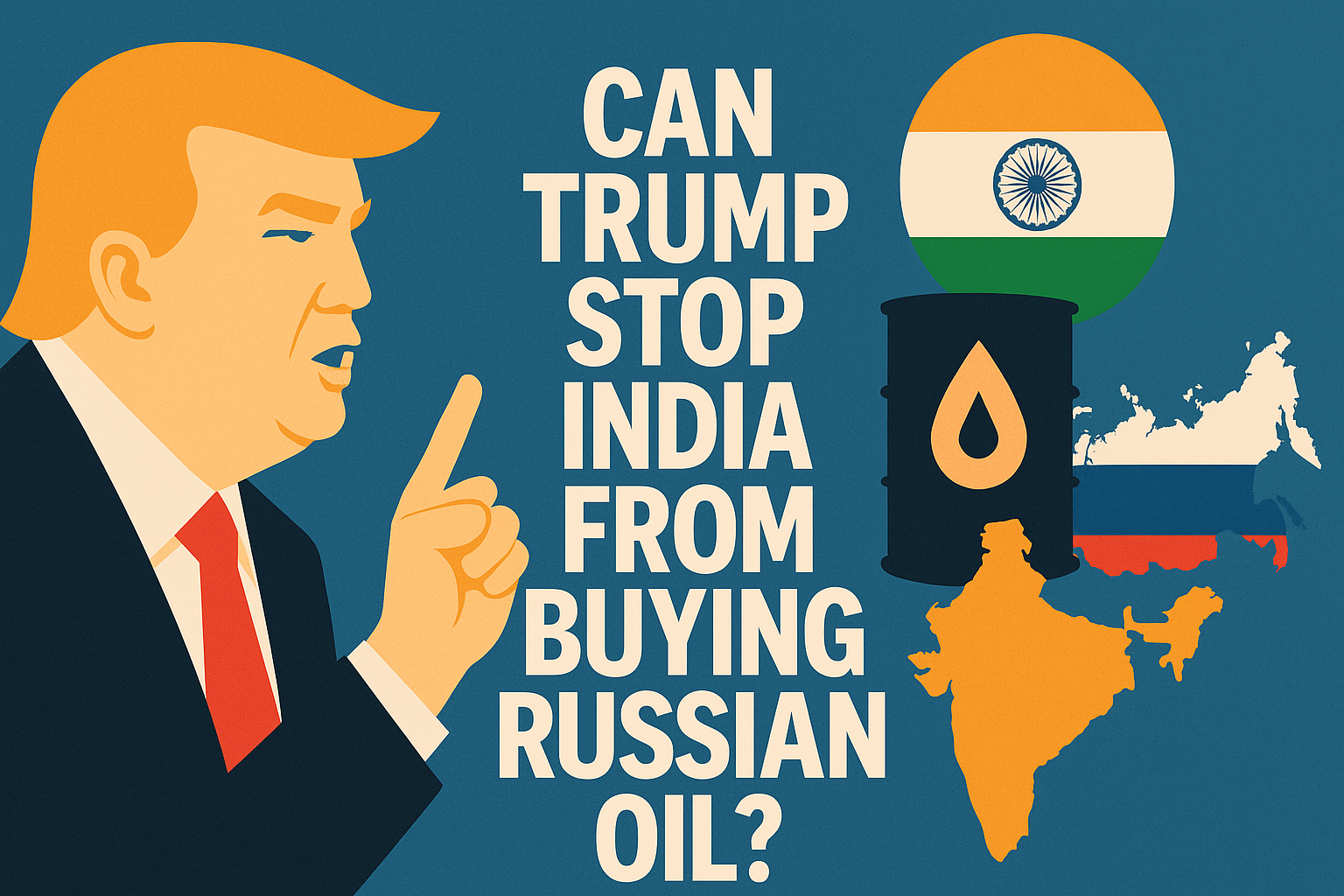The latest U.S. sanctions targeting Russia’s top oil producers mark the most aggressive economic measure yet imposed by the Trump administration against Moscow — raising questions about whether they could force major buyers like India to scale back purchases of Russian crude.
President Donald Trump has described the sanctions as “tremendous,” saying he hopes they can be lifted once the war in Ukraine is resolved. But as markets react and global energy flows shift, analysts are asking: Can Washington really stop India from buying Russian oil?
Russia’s Key Buyers
Russia exports roughly 5 million barrels of crude oil per day, with India and China as its main customers. India currently imports about 1.5 million barrels daily, while China takes around 2.2 million.
Before Russia’s full-scale invasion of Ukraine in February 2022, India bought little Russian oil. That changed when Western sanctions and G7 price caps led to discounted Russian barrels. Indian refiners seized the opportunity, importing cut-price crude, refining it into gasoline and diesel, and reselling it globally at full market prices.
Other importers include Turkey, which takes about 400,000 barrels per day, while smaller amounts flow to Belarus and other nations.
The new sanctions directly target Rosneft and Lukoil, Russia’s two largest oil companies, which together account for about half of the country’s crude exports.
How the U.S. Sanctions Work
Under the National Security Act (NSA) and U.S. sanctions law, Washington can impose “secondary sanctions” on any company or financial institution that does business with the sanctioned Russian firms.
This effectively forces international companies to choose between trading with Russia or retaining access to U.S. capital markets — a critical part of global finance. Losing dollar funding or access to Western banks could be devastating for any multinational corporation.
While Russia has found ways around earlier G7 price caps — mainly through a “shadow fleet” of vessels operating outside Western insurance and monitoring systems — the new U.S. sanctions could make such evasion far more difficult by targeting the core of Russia’s oil industry.
How India and Other Buyers Might Respond
Indian refiners now face a dilemma. Companies such as Reliance Industries, which operates the world’s largest refinery, have already signaled they will “recalibrate” their purchases in light of the sanctions.
Analysts say the risk of losing access to Western finance, insurance, or shipping could push Indian companies to scale back Russian imports, even if New Delhi wants to preserve autonomy in its foreign policy.
“Secondary sanctions would force refiners that rely on U.S. capital markets to seek alternative sources of supply,” said Helima Croft of RBC Capital Markets.
India has historically been more cautious than China about defying U.S. sanctions — notably avoiding oil purchases from Iran when Washington imposed penalties.
Meanwhile, the Nayara refinery, part-owned by Rosneft, already faces restrictions from the UK and EU and is expected to come under further scrutiny.
China, however, is less likely to reduce its imports. It buys much of its Russian oil via pipeline under long-term contracts that are harder to disrupt. “There’s a certain limit to how much China can absorb,” said Jorge León of Rystad Energy, noting that reduced Indian imports could lead to Russian production cutbacks.
Impact on Russia’s Economy
Oil and gas revenues account for roughly one-quarter of Russia’s federal budget, making the new measures a significant threat to Moscow’s finances.
According to Russia’s finance ministry, energy revenues have already fallen 20% year-on-year in the first nine months of 2025. Economists say further declines could sharply reduce the Kremlin’s ability to fund the war.
Still, experts warn that President Vladimir Putin has historically endured economic pain to maintain political control and strategic goals. “Putin’s objectives stretch far beyond economic logic,” said Alexandra Prokopenko of the Carnegie Russia Eurasia Center.
Oil Prices React to Uncertainty
The sanctions have injected fresh volatility into oil markets. Brent crude has already climbed about 9% this week, rising from $60 to around $70 per barrel, as traders weigh the potential supply disruption.
“If production losses exceed two million barrels per day, prices will face strong upward pressure,” said Amrita Sen, founder of Energy Aspects.
While higher prices could complicate Trump’s pledge to curb inflation, the market remains relatively well-supplied for now. Saudi Arabia has recently boosted output as part of an Opec+ strategy to regain market share after prices dropped 10% earlier in October.
Still, uncertainty remains high. “We don’t know how this is going to play out,” said Michael Haigh of Société Générale. “The market seems to be saying, ‘Buy it now, ask questions later.’”
Outlook: A Test of Influence
Ultimately, Washington’s power to deter India — the world’s third-largest oil importer — will depend on how aggressively it enforces the new sanctions and whether Indian refiners can find viable alternatives.
If U.S. pressure limits India’s imports, Russia’s oil revenues could fall sharply, intensifying strain on its economy. But if India and China continue to buy, even at reduced volumes, Moscow may still find enough demand to keep its war machine running — and global oil prices climbing.








